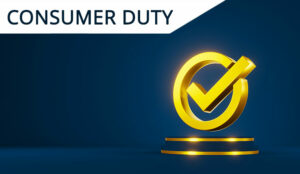Are you sick and tired of bad press and angry customers? In this article, Martin Dove tells us the six things businesses can do to heal the rift between consumers and the contact centre industry, and get back on good terms with their customers once and for all.
Twenty years ago you had to make an appointment at the bank, speak to your bank manager and go though an arduous face-to-face process in order to apply for a loan or extend your overdraft. Now, instead of rushing to the bank in your lunch break, you can get on the phone and apply for a loan while you check your e-mail, bank online and still eat your sandwich. The process has become undeniably quicker and easier. Yet it seems like practically every other day that I see negative press about the call centre industry in the newspapers. Why is this?
When we consider the revolution in customer contact that has taken place in the past two decades, it’s hardly surprising that there have been challenges with setting up and managing complex call centre operations.
Five easy steps to call centre heaven
|
The successful adoption of call centres by businesses to handle previously onerous tasks has revolutionised the way consumers interact with product and service providers. Yet I think most managers and users of call centres would agree that telephone interaction lacks the personal element of face-to-face communication. Misunderstanding, confusion and frustration are unfortunately more likely on the telephone. Plus a legacy of outbound cold calling, poor quality outsourcing and offshoring has meant that consumers have had their fingers burnt.
The challenge is that while the wider industry has woken up to the financial and time-saving benefits of the call centre, businesses still need to work more closely with their customers to improve the service they are offering and change negative perceptions of the industry.
1) Deliver to expectation
Consumers interact with hundreds of brands every day. They have a set notion of what level of service those brands should deliver and this extends to their call centre experience.
For example, if you take out five star cover with your energy supplier, you expect them to know what brand of boiler you have, when it was installed and when it was last serviced. On the other hand, if you buy a budget flight for a fiver, you don’t really expect to be greeted by name when you call them, and you are prepared to sit in a queue until your call is answered.
The same applies when running a call centre. Be very clear what your customers expect and what level of service you need to deliver to meet those expectations. You need to be clear about what your objectives are. Have a mission statement, make sure everyone knows it, buys in to it, sticks to it and then be sure to build it in to your call centre strategy from the off.
2) Optimise your processes
Make sure all your process designs are customer-centric. A process designed to reduce call duration by 15 seconds is no use if it means 20% of callers do not have their call resolved and have to ring back.
Don’t set targets for the sake of them. Rather, set targets that will mean customers go away with their issue resolved in the swiftest manner possible. At every point in the planning of your call centre systems and processes, you’ll undoubtedly ask yourself, “Will this process reduce costs?” Perhaps the question you should be asking is: “Will this process improve customer service?”
3) Monitor your contact centre
The introduction of formal bodies like the Call Centre Association and official certification programmes such as the Customer Operations Performance Center (COPC) have been responsible for raising standards in the industry and instilling a greater degree of professionalism.
The role of the Direct Marketing Association (DMA) is also important, particularly with regard to outbound calling. Poor practices are being slowly but surely rooted out and this is driving businesses to be smarter when selling via the telephone. In turn, this means that consumers are targeted with more specific, more useful and more relevant products and services, which is a good thing all round.
Aside from making contact with these kinds of associations and looking to abide by their best practice guidance, look for other routes to monitor your contact centre. Industry benchmarking is certainly a useful tool. Find out what other people in the industry are doing, set your contact centre targets against theirs, where relevant, and be sure to relate these to the satisfaction of your customers.
4) Utilise technology
There are a finite number of reasons why people will contact a call centre and using low paid, under-motivated and under-challenged frontline staff to route calls is a waste of resources. Intelligent solutions that blend speech self-service technologies with human agent interaction allow the staff in the call centre to deal with the more complex and personal enquiries.
In turn, this drives up the levels of customer care provided by staff and enables them to offer a greater chance of first time call resolution and rapid routing to the right person with the skills and authority to deal with an enquiry there and then.
5) Hire and retain good staff
In my years of experience I firmly believe that the most critical role in a call centre is the first line manager or ‘team leader’. It is notoriously hard to train and retain staff of this calibre in the contact centre industry. So to ensure they stay and perform well, you must make the most of your staff, giving them the chance to develop and blossom. Also think about how you can incentivise your staff through training, reward schemes and flexible working.
While it can be useful to scale staffing levels up and down, an abundance of temporary unskilled staff does not make for a skilled workforce. Think crucially about how you can incorporate technology in to the call centre and use high competency staff to the very best of their ability.
At Merchants Consulting, we advise businesses to make the effort to match the agent to the customer in what we describe as ‘lifestyle competency’. All that this means is that if you’re running a customer contact centre for washing powder, make sure your agents own a washing machine and do their own clothes washing. Similarly, if you run a call centre related to the motoring industry, make sure your agents know how to drive. It may sound incredibly obvious stuff, but you would be surprised how many people get the simple things wrong.
6) Up-sell, cross-sell and smart sell
With the Telephone Preference Service (TPS), the pool of data available for cold calling is reducing. As a result, the traditional double glazing style of cold calling is falling by the wayside and making space for a new breed of quality selling and outbound communication.
The emergence of this new kind of call centre operation should mean that the way in which the outbound call centre is viewed could slowly but surely move from a perceived inconvenience to something that adds value and makes everyday life easier. When I moved house, for instance, I had a call from Talk Talk, which recognised that I had just moved in and asked if I had broadband. Their timing and understanding of my needs could not have been better. I was intending to get broadband installed, knew the brand and was happy to give them my business.
Use your existing pool of data to sell people things they may be interested in, if it is appropriate. In an increasingly cash-rich time-poor setting, consumers welcome relevant up-selling. Your customer is informing you of a change of address for their car insurance. Might they need a new house insurance policy? Last year they booked a holiday with you in January. Maybe it is worth approaching them with an early buyer discounted holiday in December.
Such techniques are likely to be more successful from a sales point of view than traditional scattergun outbound techniques. They will increase the relevance of call centres to people’s lives and foster better consumer attitudes to the call centre.

Martin Dove is European managing director for Merchants Consulting
Author: Jonty Pearce
Published On: 26th Oct 2006 - Last modified: 2nd Nov 2017
Read more about - Customer Service Strategy, CX





















